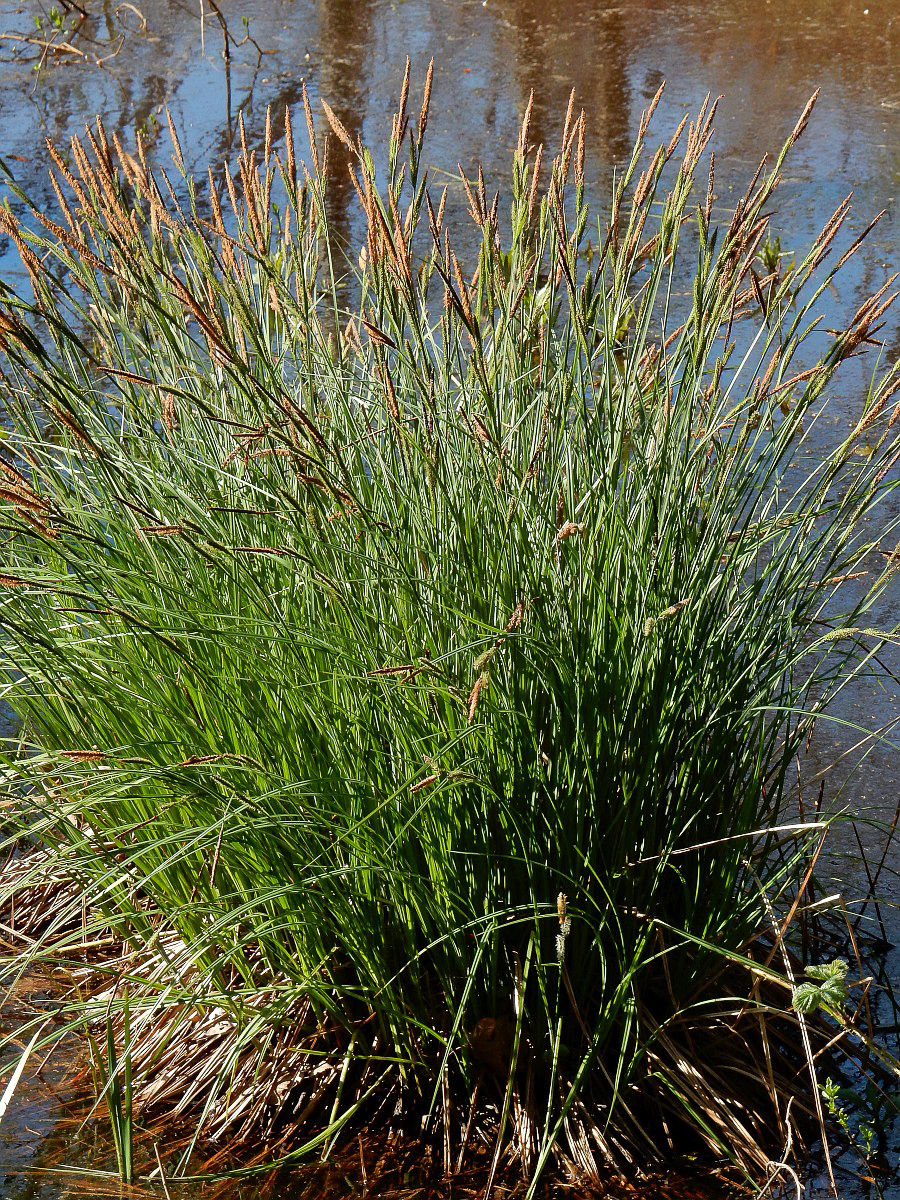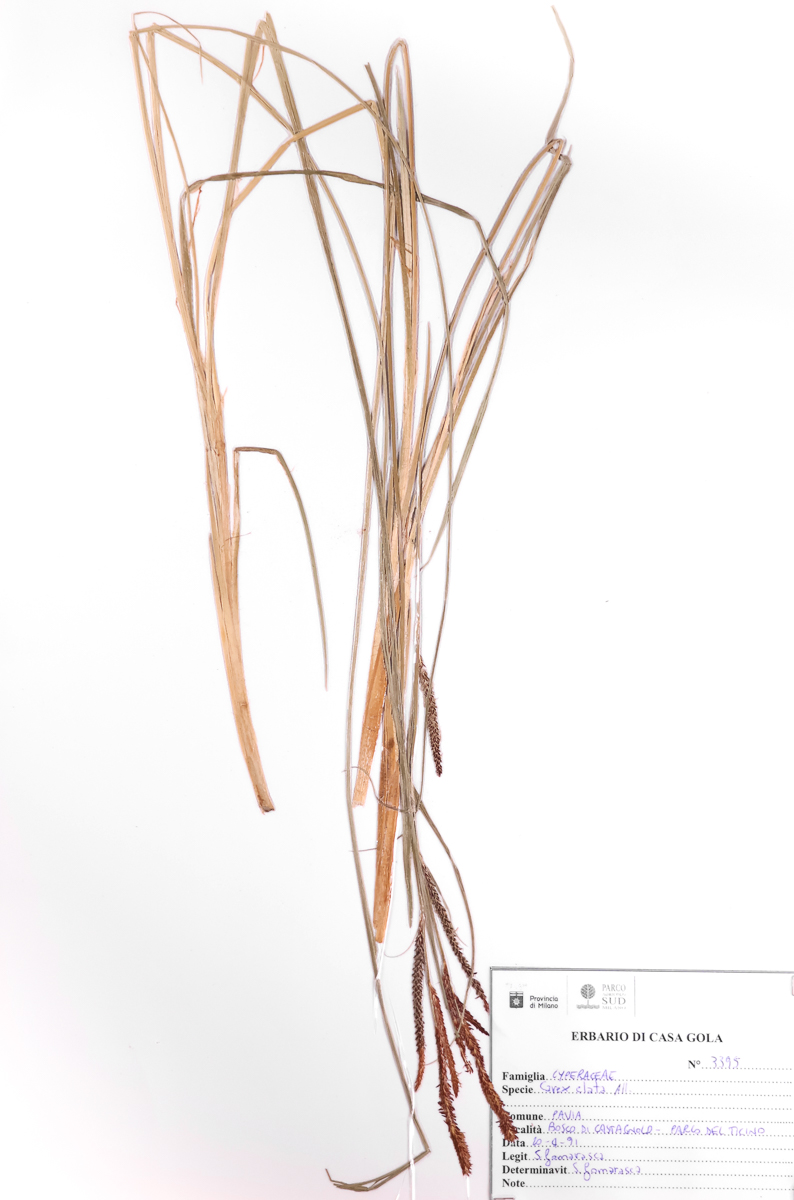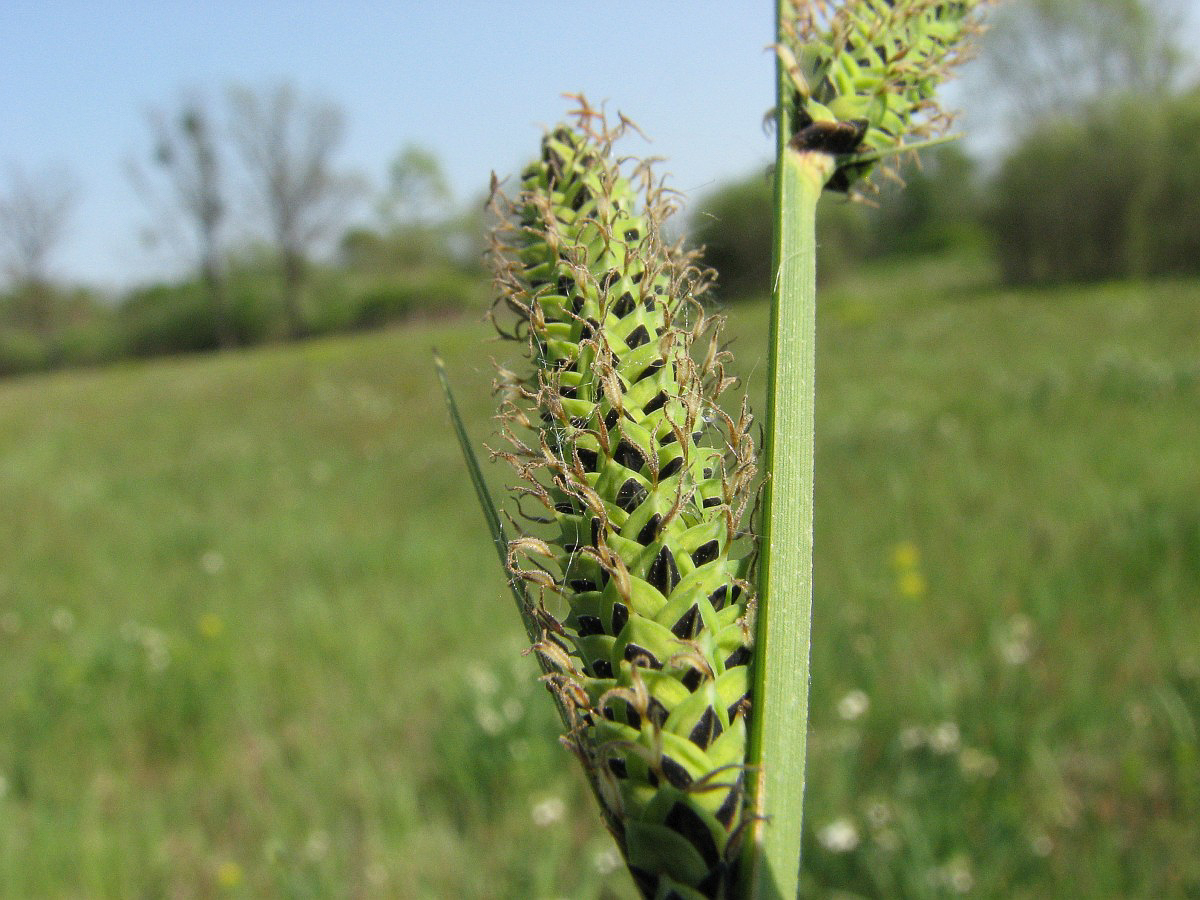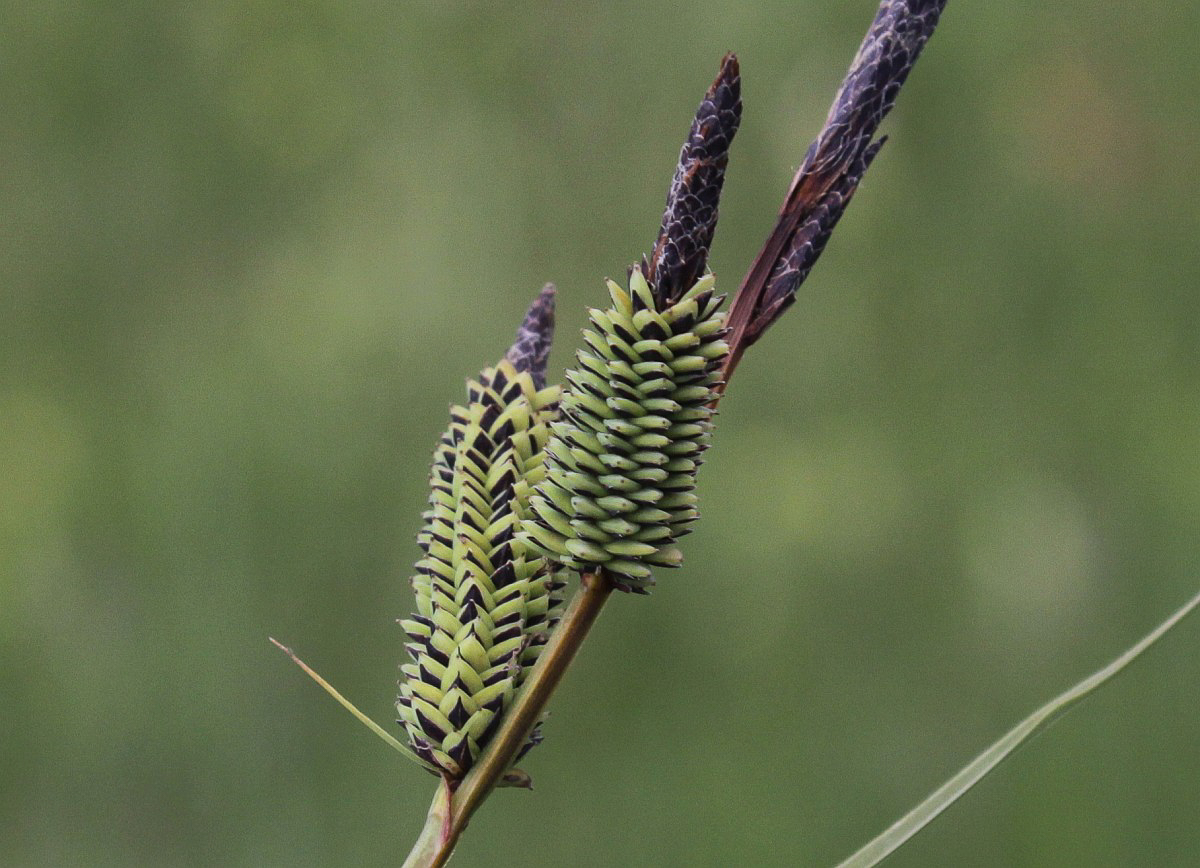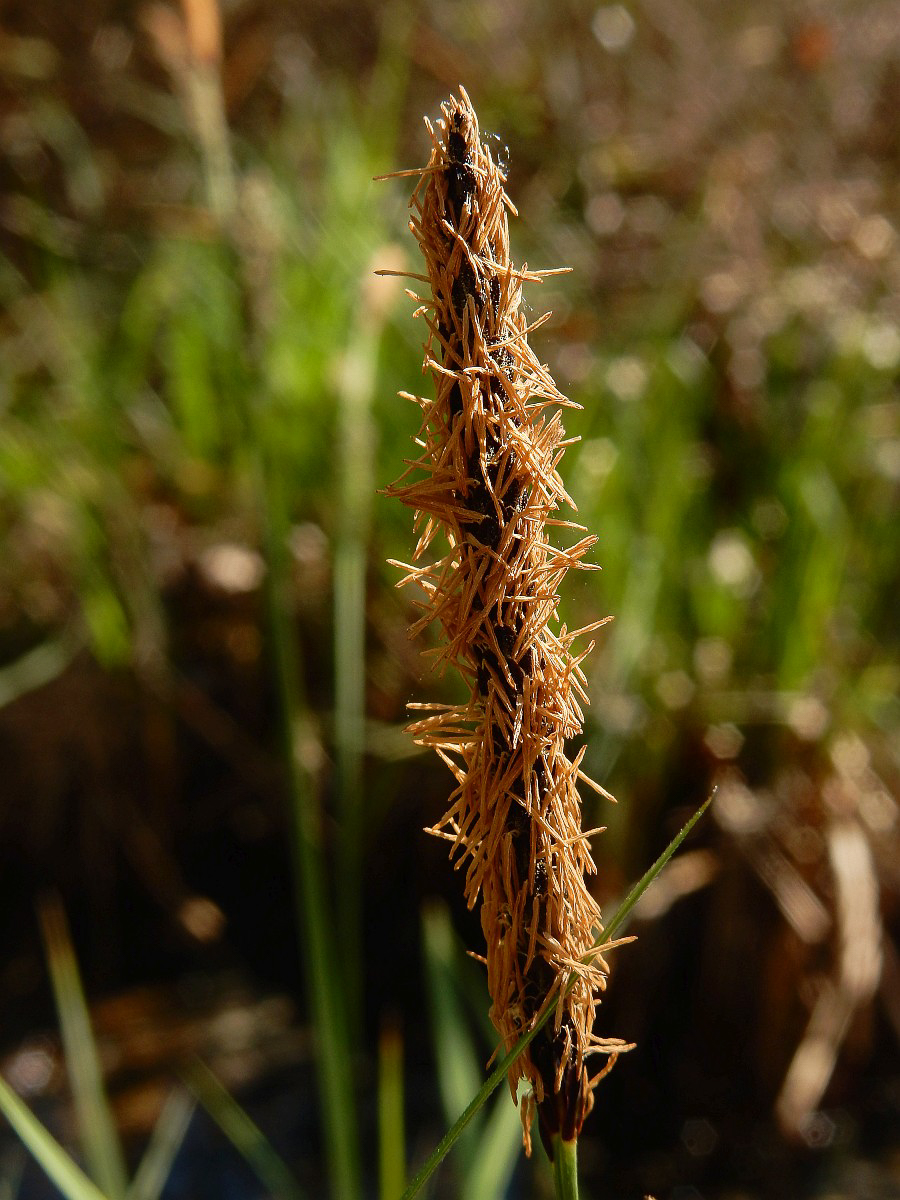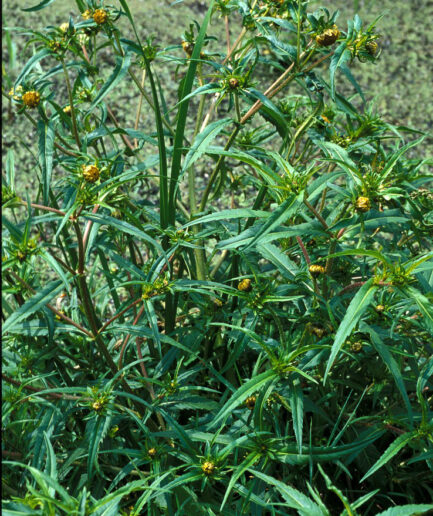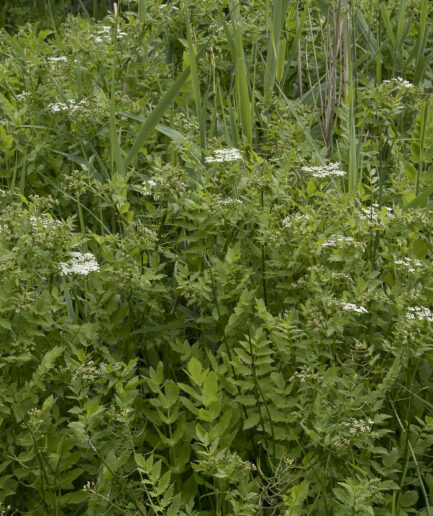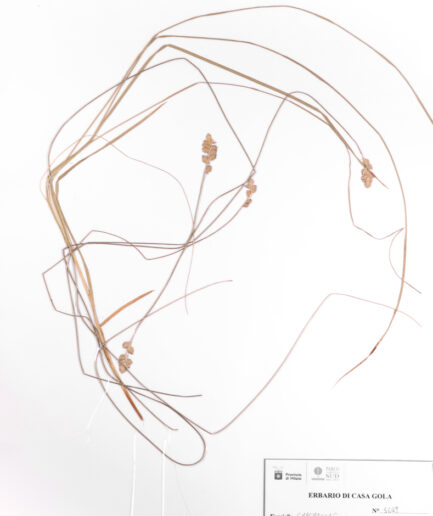Tufted sedge
Scientific name: Carex elata All.
Family: Cyperaceae
MORPHOLOGY
Habit and size: Perennial herbaceous plant, 30-100 cm tall, without stolons, forming robust and compact tussocks that can exceed 1 m in height.
Stem: Erect, robust, sharply triangular stem, very rough especially in the upper part. Basal sheaths are scale-like, entire, ranging in color from yellowish-brown to dark reddish-brown, rarely violet.
Leaves: Flat, glaucous leaves, 3-8 mm wide, generally shorter than the stem, rough at the margins and on the midrib of the lower side.
Flowers: Inflorescence is (7) 10-17 cm long, green and black, consisting of 1-3 (4) male spikes and 2-4 female spikes. Upper male spikes are (1) 2-8 cm long, ± cylindrical; glume is about 5 mm long, narrowly oblong with a rounded to subacute apex, ranging in color from reddish-brown to black, with a green central vein. Lower female spikes are (2.5) 4.5-5 cm long, cylindrical, dense, (5-10 flowers) sometimes with male flowers at the apex distributed along the upper part of the stem, erect or pendulous; glumes are 3-4 mm long, oval or oblong-lanceolate, with an acute apex, as long as or slightly shorter than the utricles, dark brown to blackish in color, with a green central vein. Blooms between March and May.
Fruits and seeds: The fruits are pseudanthia (utricle) 3-4 x 1.5-1.8 mm, erect or erect-patent, elliptic, compressed, slightly biconvex or plano-convex, smooth or papillose, with perceptible veins, abruptly narrowed into a short beak of 0.2 mm, truncate or rarely emarginate. Achenes are 1.5-2 x 1.1-1.5 mm, obovate or suborbicular, lenticular, brownish.
DISTRIBUTION AND HABITAT
Present throughout Italy except for Molise, Puglia, and Basilicata. It grows near lakes, rivers, ditches, canal banks, ponds, marshes, between 0 and 1,600 m.
Photo: under free license from Saxifraga and Ed Stikvoort, Jasenka Topic, Peter Meininger


